Scottish Patient Experience Survey of GP and Local NHS Services 2011/12 Volume 3: Variation in the Experiences of Primary Care Patients
This report examines the relationship between self-reported experiences of patients and a range of patient, GP practice and regional level characteristics.
Annex C: Tables of Odds Ratios
Odds ratios for all factors are presented below. Odds ratios are only shown for a particular factor if it was included in the model for a particular question. Where odds ratios are significantly greater than one they are shaded green and where they are significantly less than one they are shaded pink.
If an odds ratio (and its 95% confidence interval) are above 1, then the group has reported better experience, whilst if the odds ratio (and its 95% confidence interval) are below 1, the reported experience of the group is worse.
Because of the complexity of the findings, and because a very large number of tests have been conducted, readers are advised to consider overall patterns and avoid over-interpretation of the individual odds ratios.
Gender
Odds ratios for female patients are compared to male patients.
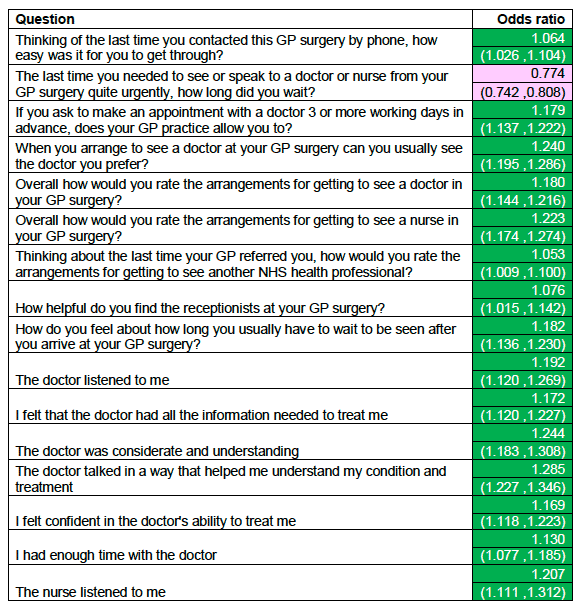
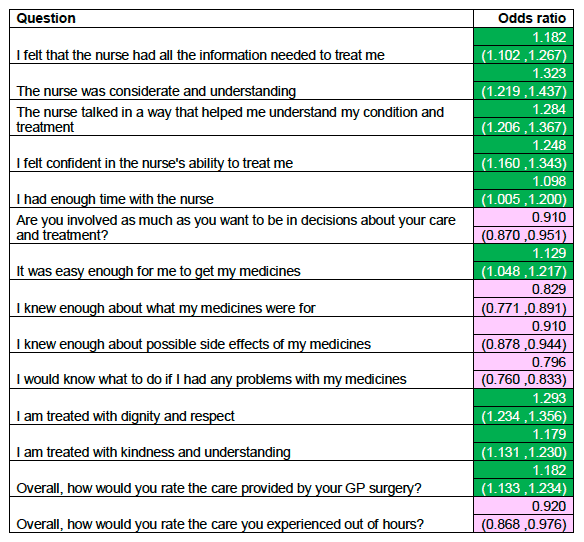
Age
Odds ratios for age are interpreted as the odds for a patient one year older than the mean age (of surveyed patients) compared to a patient who has the mean age. The effect may seem quite small, but it must be remembered that the difference is for a one year increase in age and the survey covered a large age range.
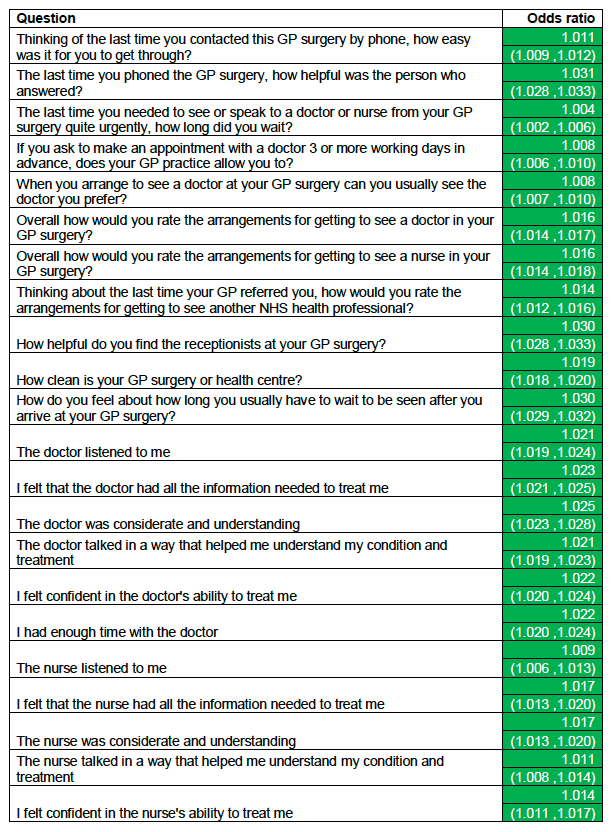
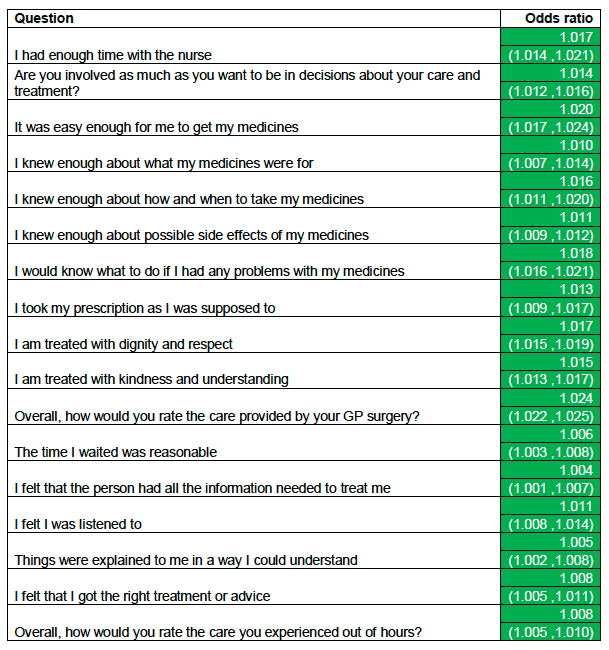
Ethnicity
Odds ratios are compared to the group of people who identified themselves as white.
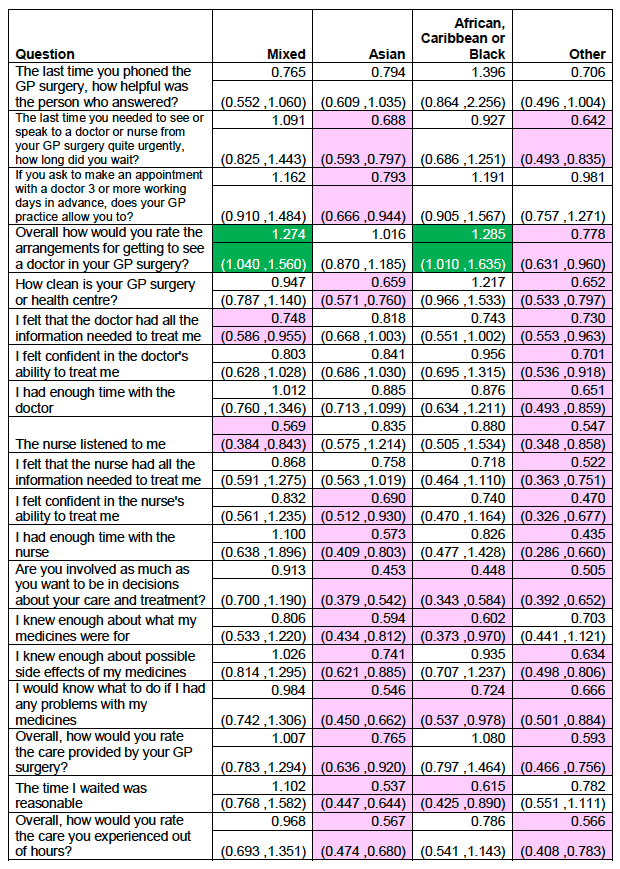
Religion
Odds ratios for religion are compared to the group of people who identified themselves as belonging to the Church of Scotland.
None, Roman Catholic and other Christian
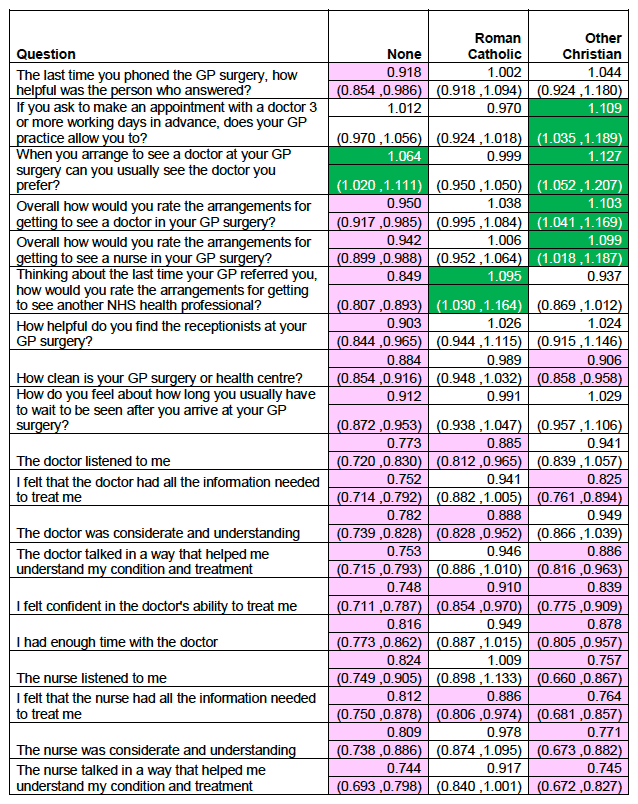
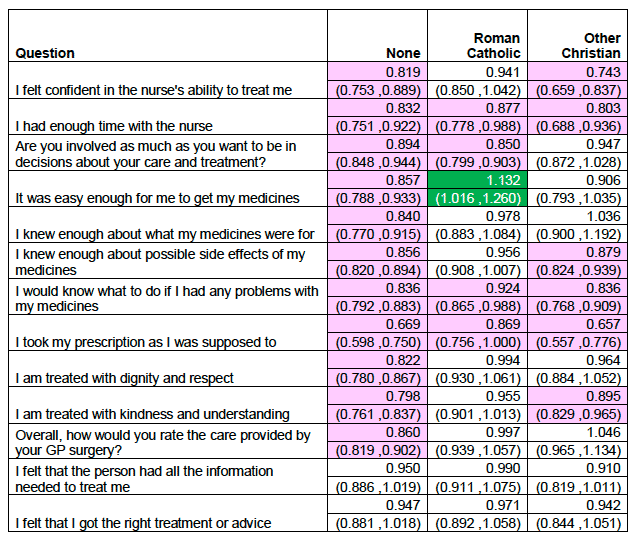
Muslim, Buddhist and Sikh
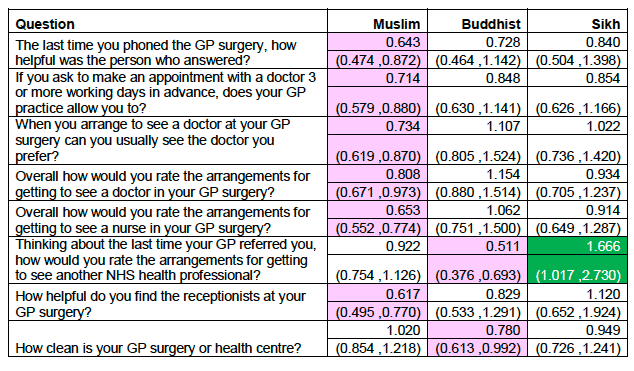
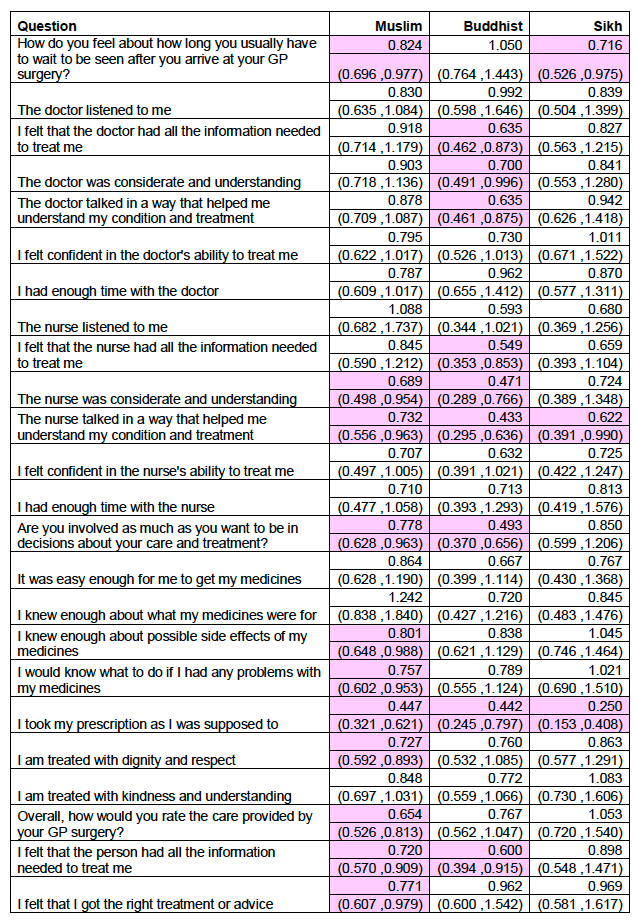
Jewish, Hindu, Pagan and another religion (non-Christian)
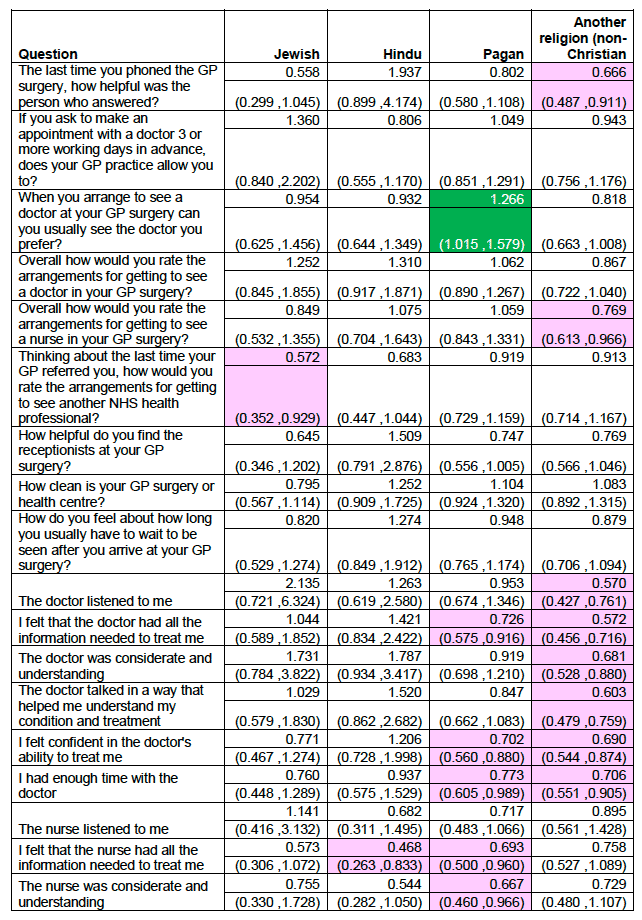
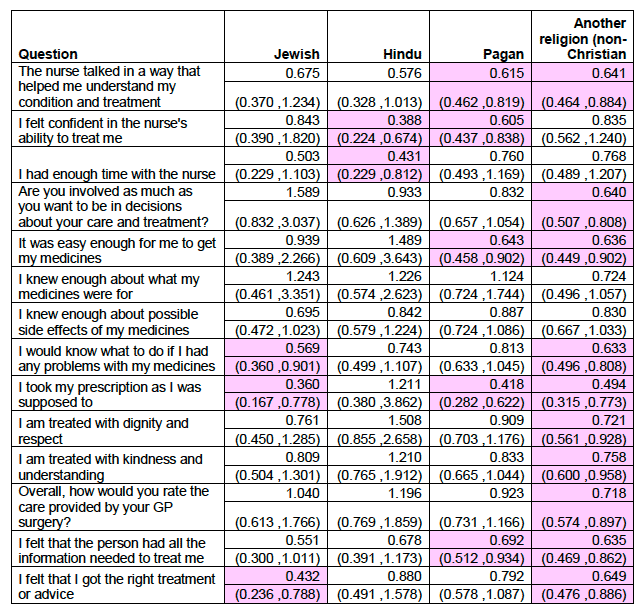
Sexual orientation
Odds ratios for groups are compared to the group of people who identified themselves as heterosexual/straight.
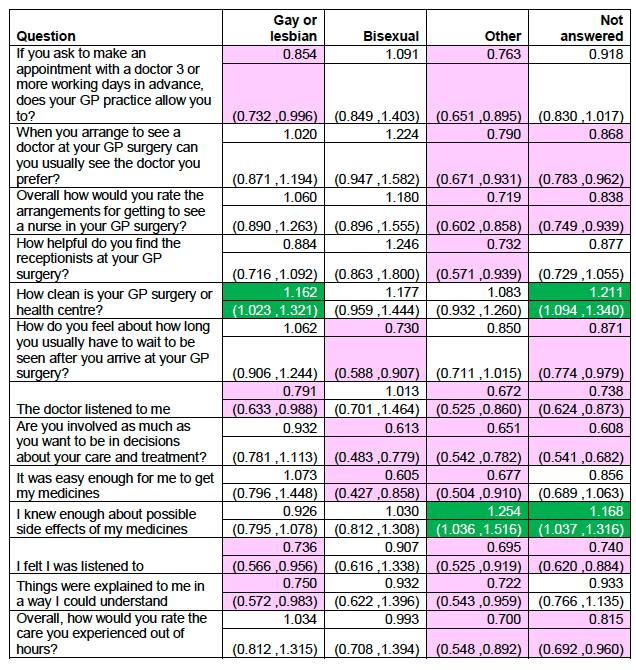
Deprivation
Groups living in different SIMD quintiles were compared to the group of people living in the least deprived quintile (5).
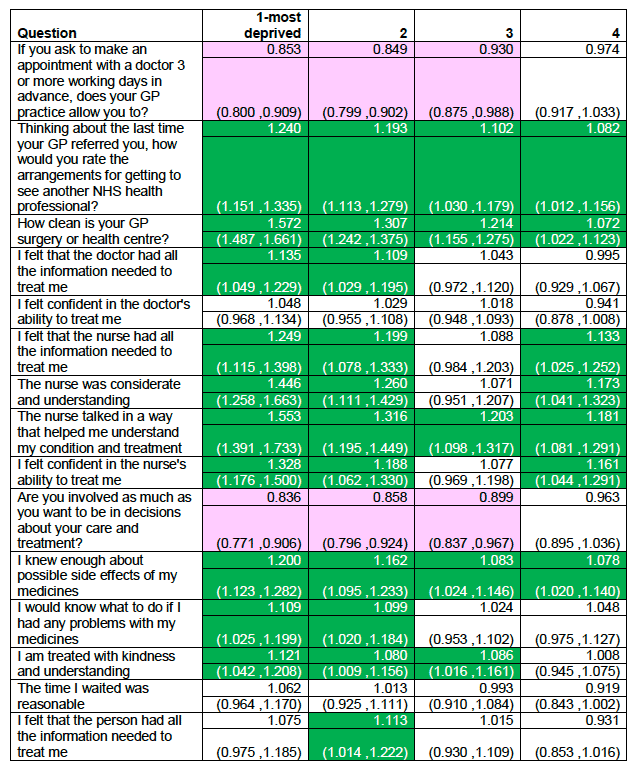
Urban/rural classification
Odds ratios for people living in different types of area are compared to the group of people living in large urban areas.
Other urban areas, accessible small towns and remote small towns
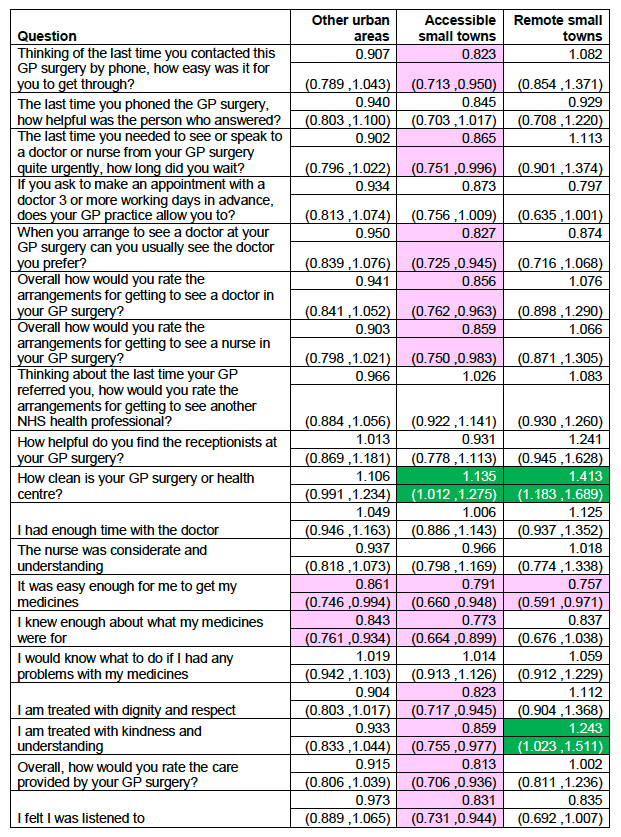

Accessible rural and remote rural
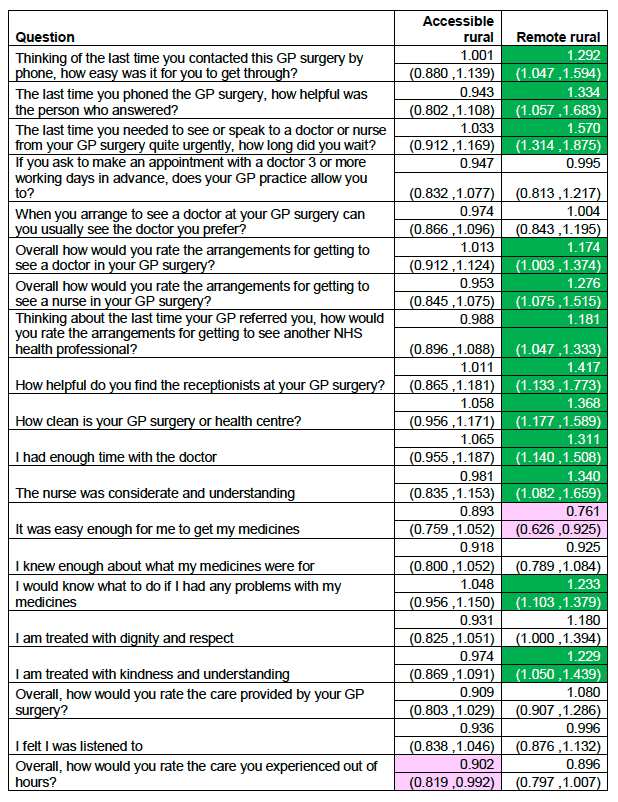
Work status
Odds ratios for different groups were compared to the group of people who were retired.
Work full time, part-time and in full-time education or training
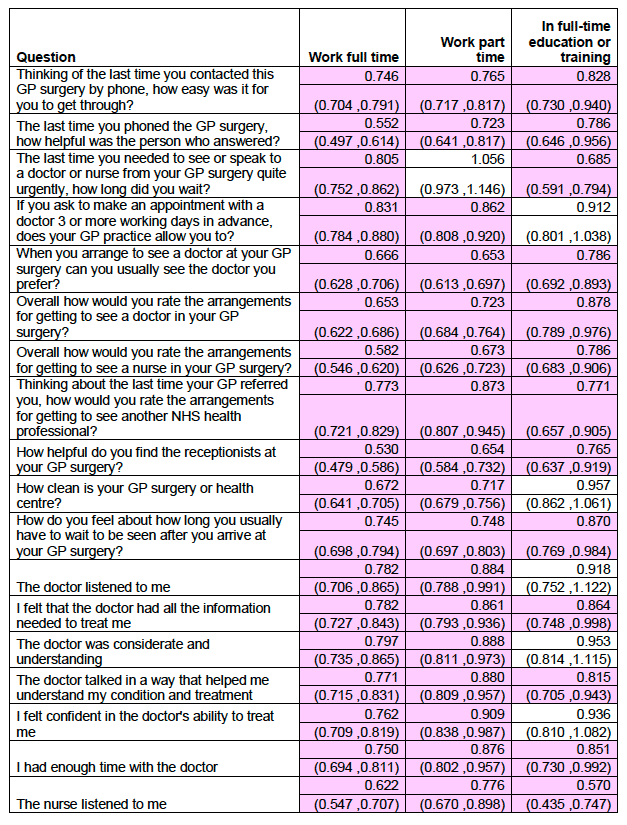
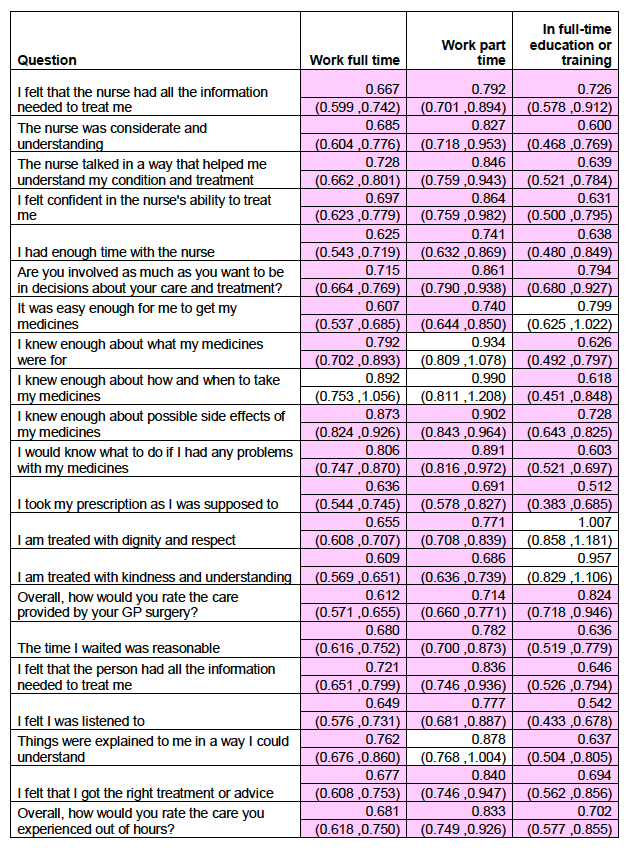
Unemployed /Looking for work, Do not work due to illness or disability; and Other
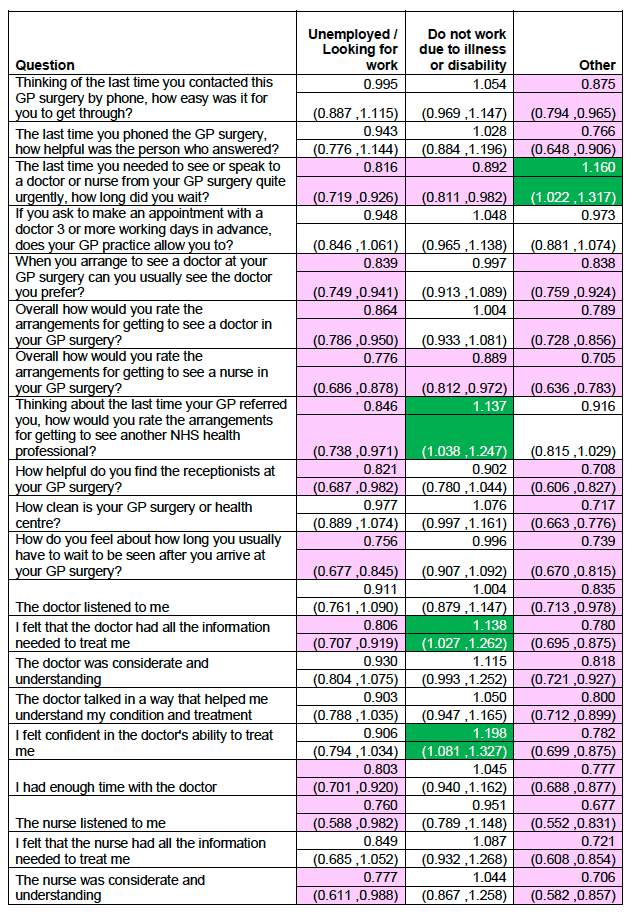
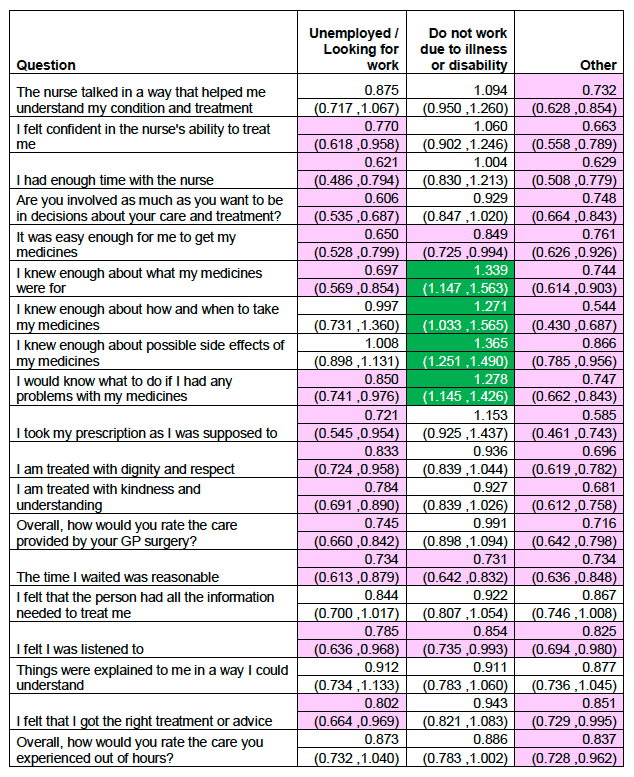
Carers
Odds ratios were compared to the group of people who did not spend time giving regular help or support to family members, friends, neighbours or others because of long-term physical / mental ill-health /disability or problems related to old age.
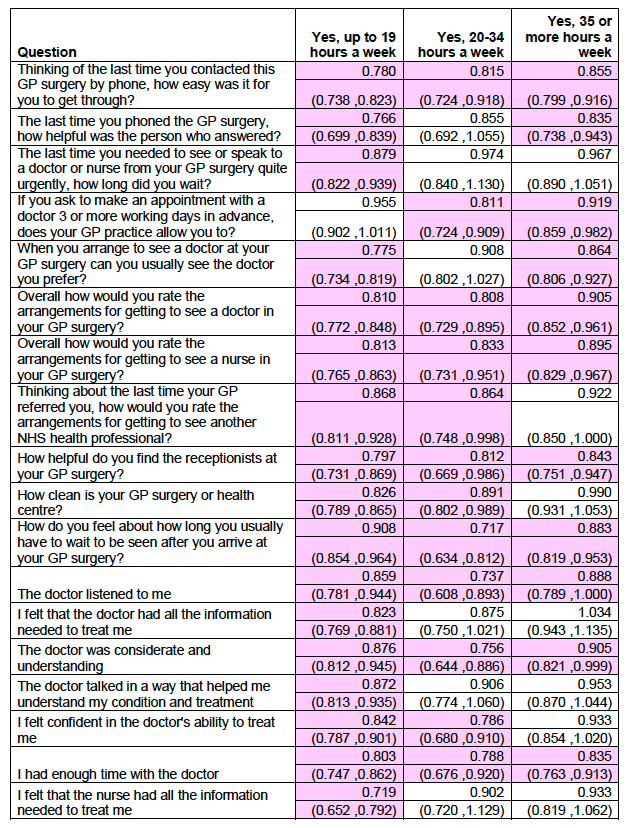
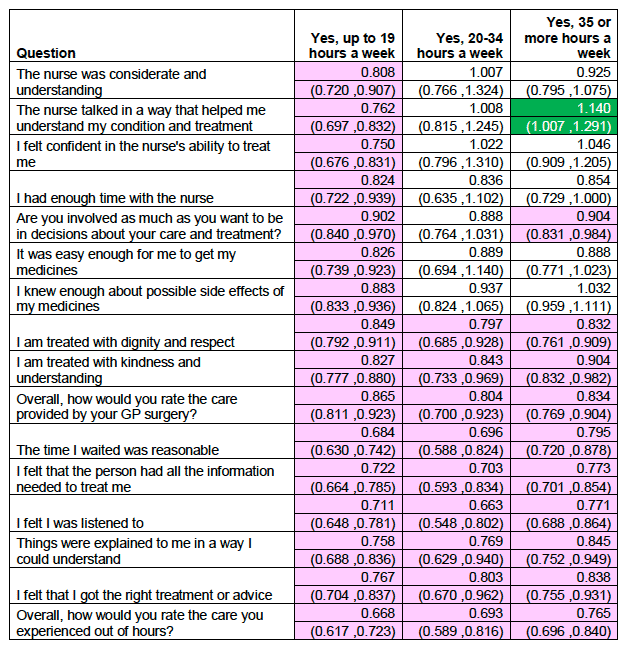
Health status
Odds ratios were compared to the group of people who assessed their health as good.
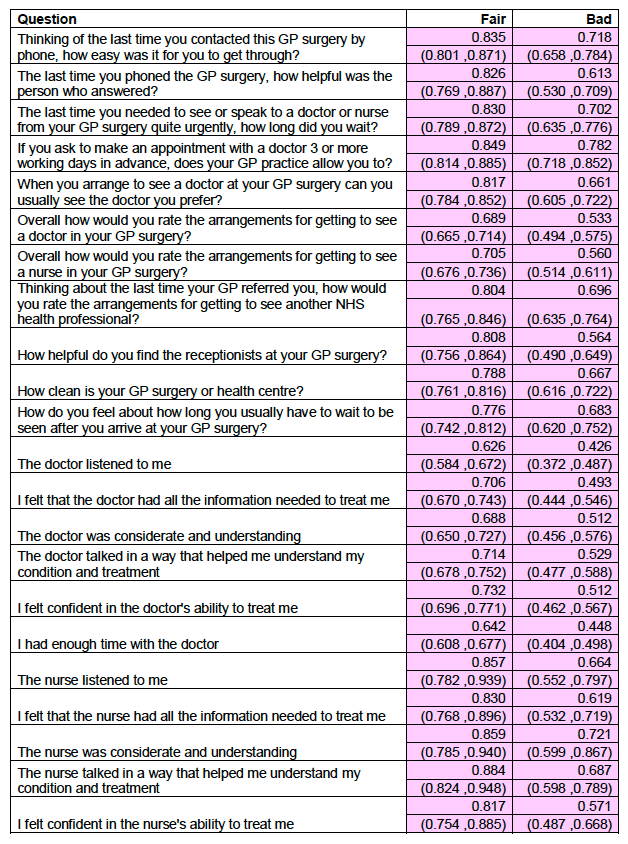
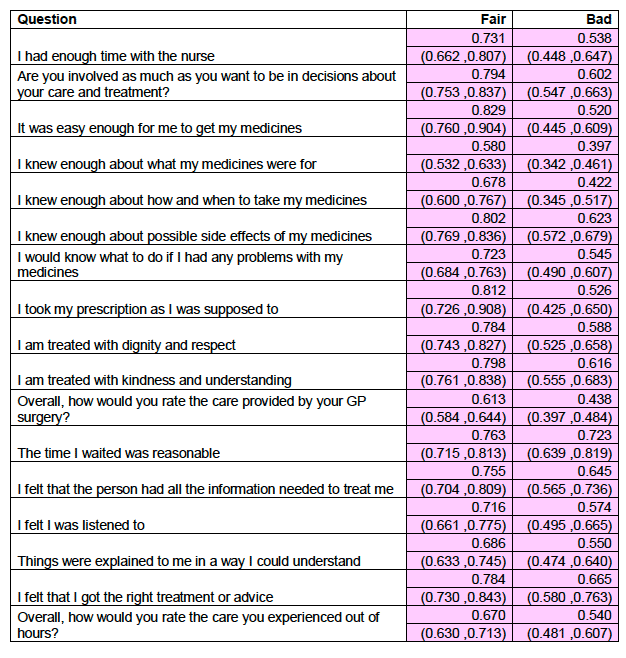
Day-to-day activities limited
Odds ratios were compared with the group of people who did not have a health problem or disability that limited their day-to-day activities
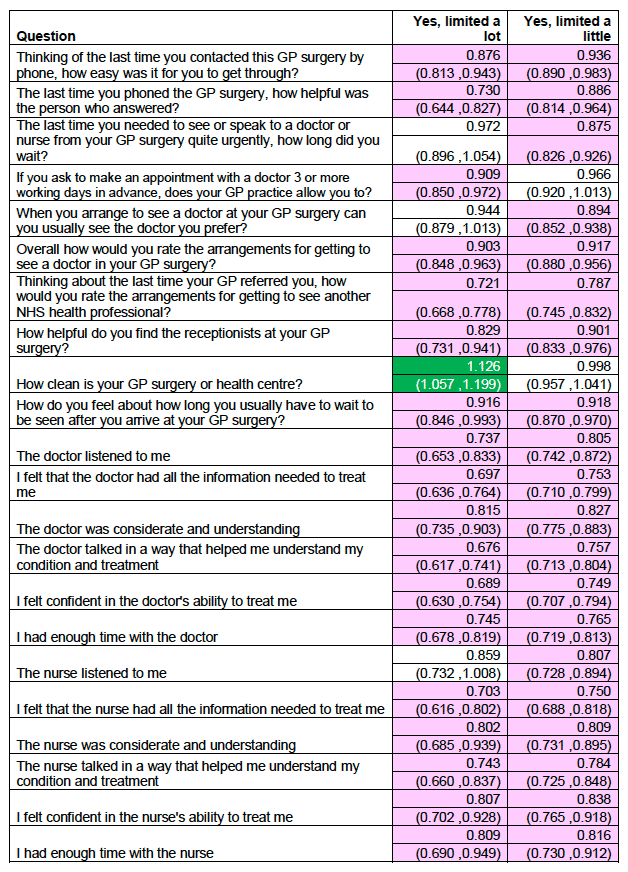
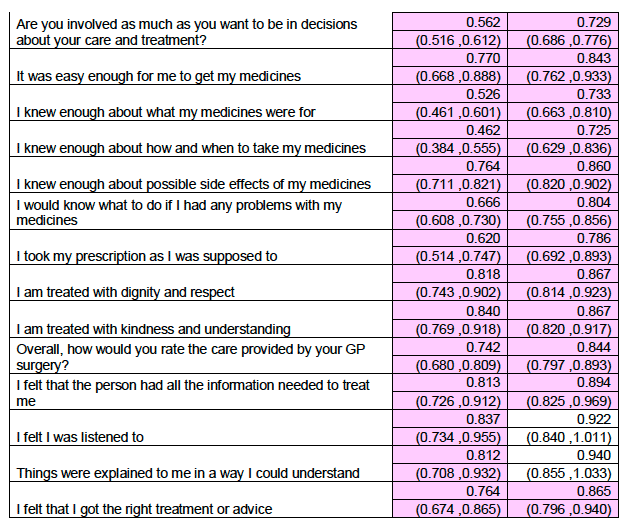
Translation, interpreting and communication support needs
Odds ratios for the group of people with translation, interpreting and communication support needs were compared to the group of people who did not require an interpreter or other help to communicate.
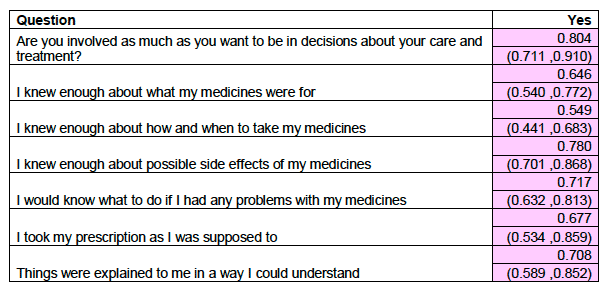
Disabilities
Odds ratios for the group of people with each disability were compared to the group of people without that particular disability.
Chronic pain
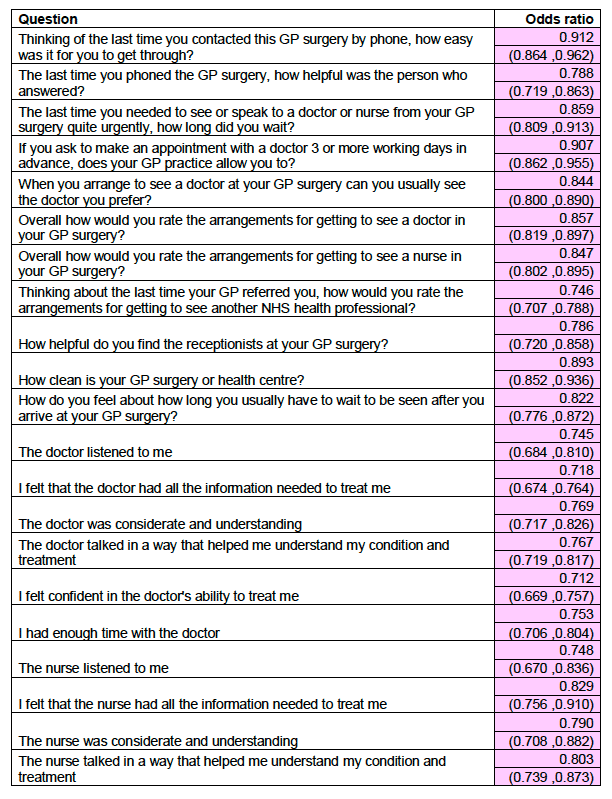
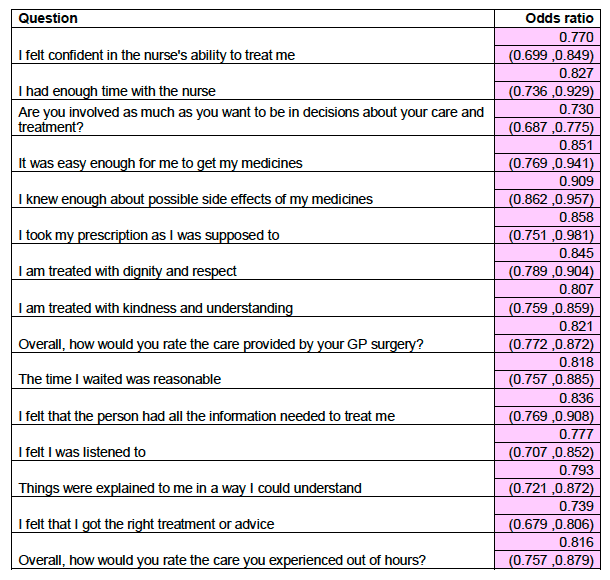
Physical disability
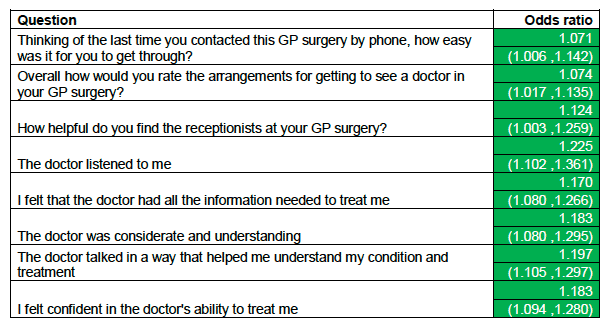
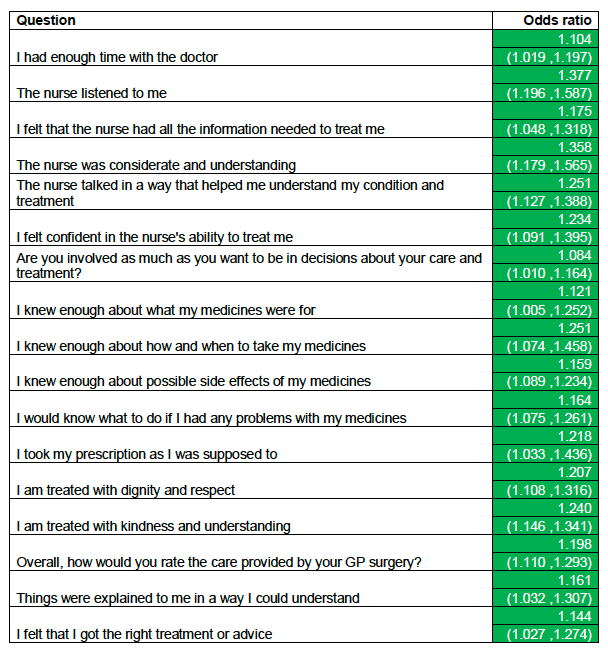
Deafness or severe hearing impairment
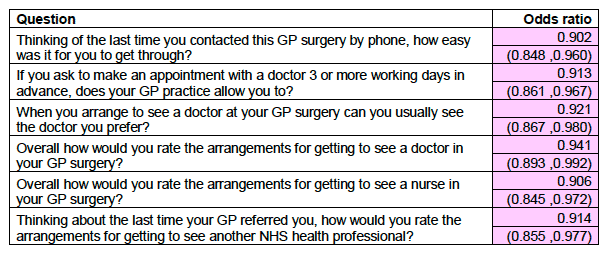
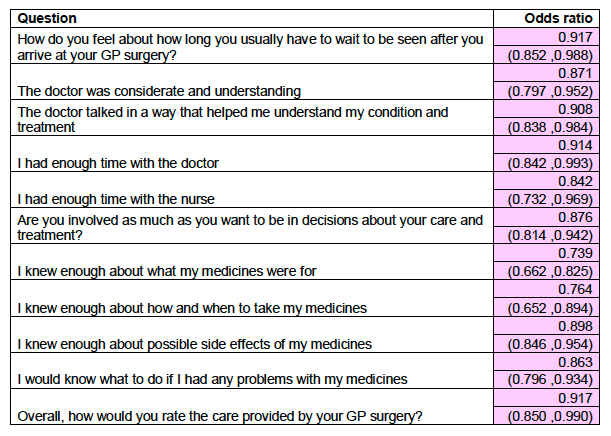
A mental-health condition
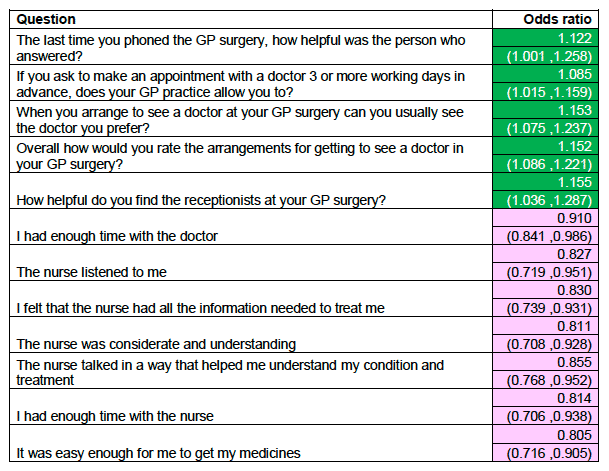
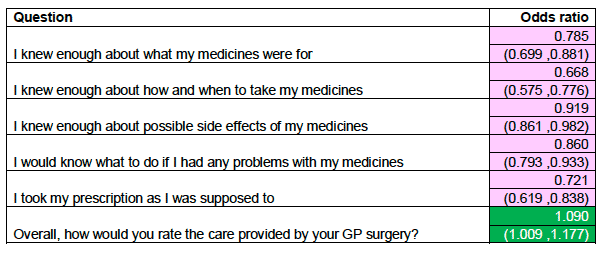
Blindness or severe vision impairment
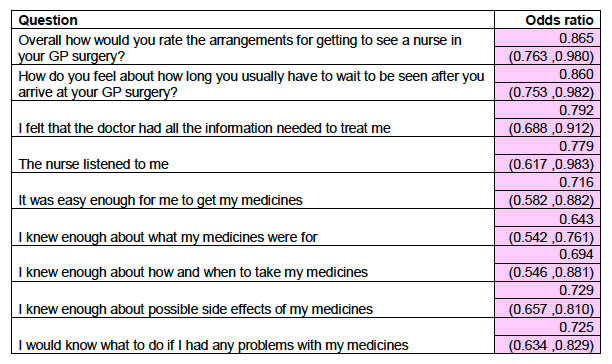
A learning disability
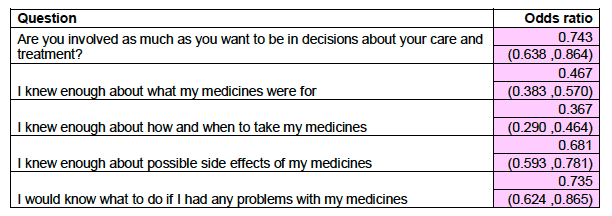

Another long-term condition
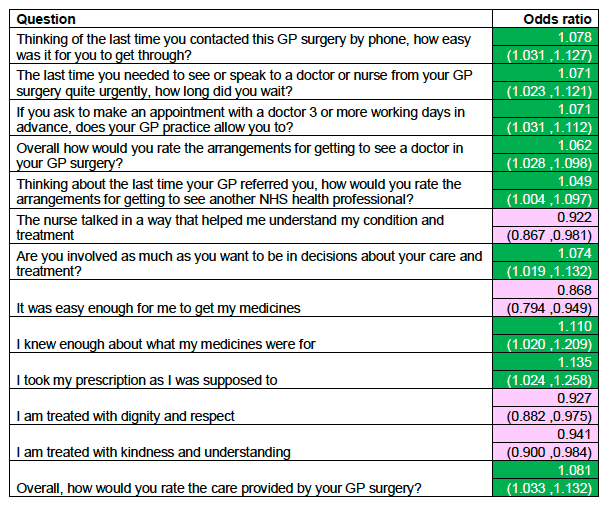
Other factors
GP practice size
Odds ratios for GP practice size were compared to practices where the total number of patients registered ranged between 2,500 and 4,999 patients.
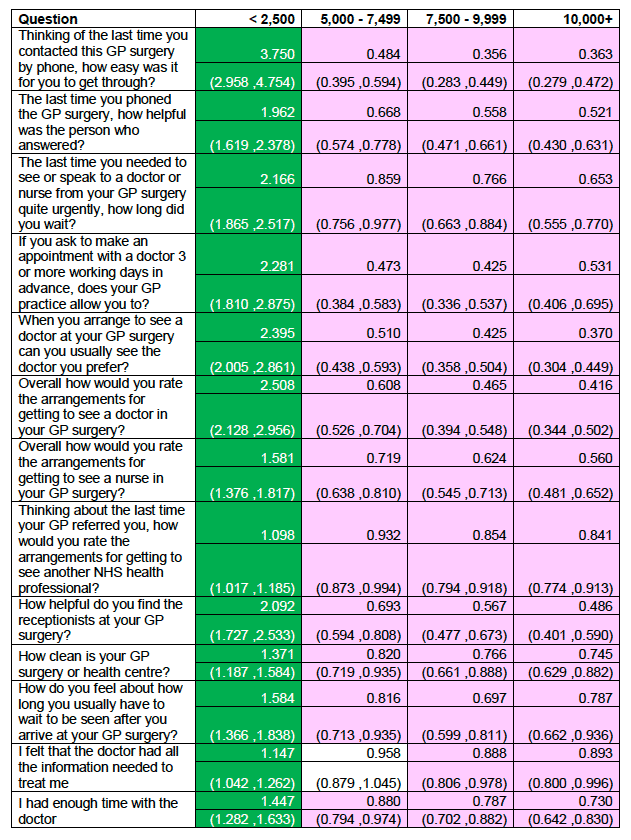
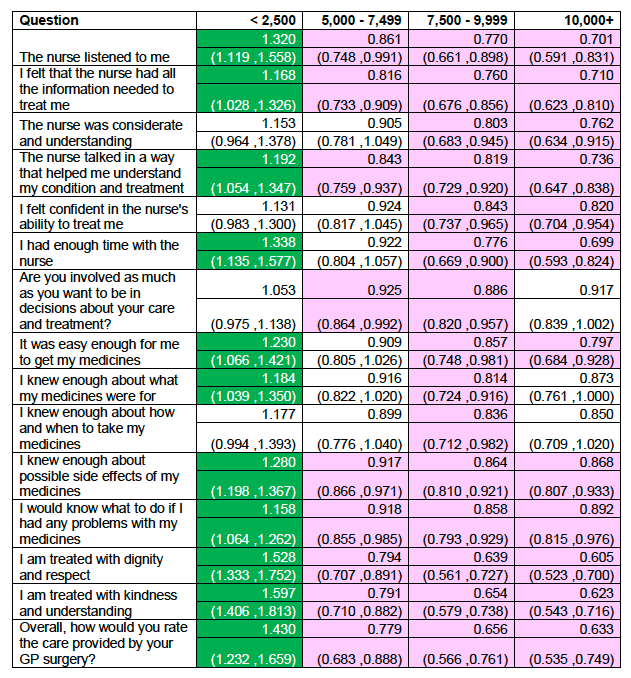
Percentage of GP practice list from deprived areas
Odds ratios here are interpreted as the odds for a one percentage point increase in the mean percentage of the practice list from the 15% most deprived areas, compared to the mean percentage. The effect may seem quite small, but it must be remembered that the difference is for a one percentage point increase and the percentage of patients at practices from the 15% most deprived areas ranges from 0 to almost 90 per cent.
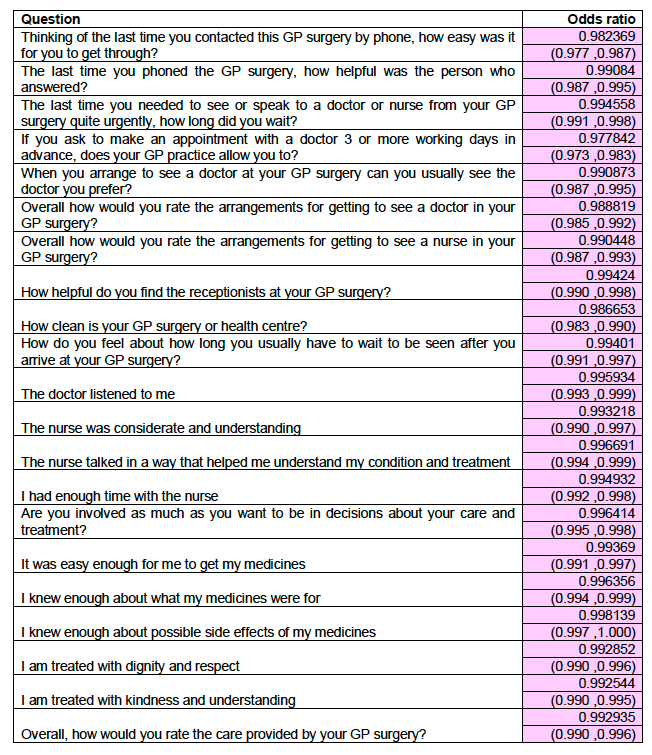
How often people contacted their GP surgery
Odds ratios for how often people contacted their GP surgery were compared to the group who contacted their GP surgery 2-4 times.
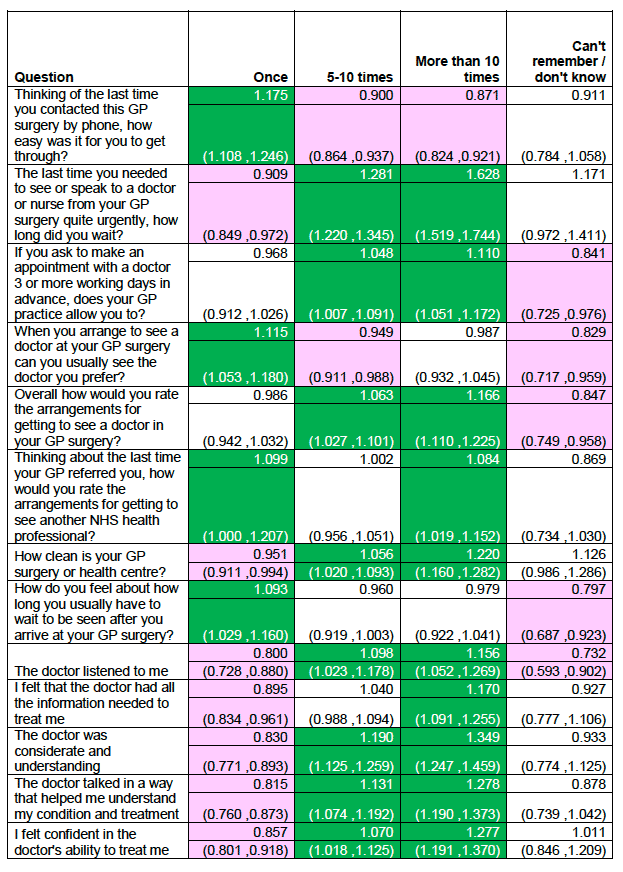
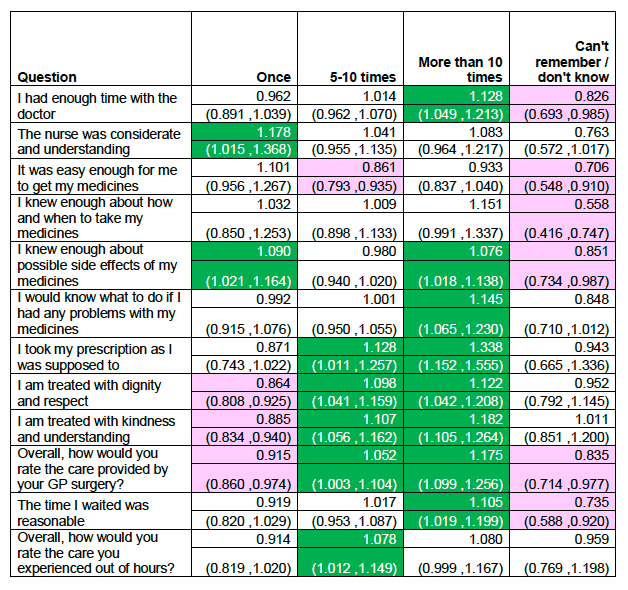
Out of hours healthcare - First NHS service contacted
Odds ratios for the out-of-hours healthcare service people spoke to or went to first were compared to the group of people who spoke to NHS 24 first.
Pharmacist/chemist, out of hours service, my own GP surgery and district/community nurse
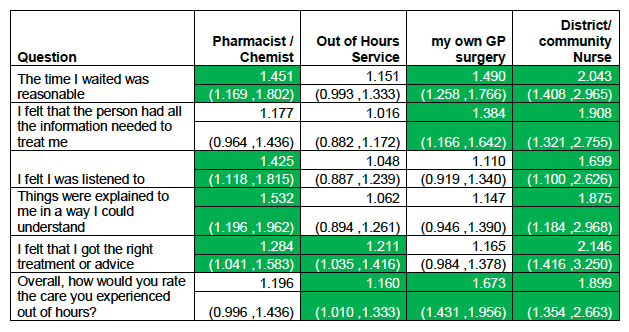
999 Emergency service, A&E/Casualty and other
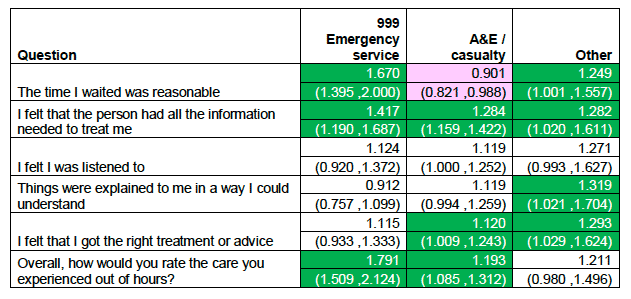
Out of hours healthcare - NHS service people ended up being treated or seen by
Odds ratios for out-of-hours healthcare service people ended up being treated or seen by were compared to the group of people who received phone advice only.
Pharmacist /chemist, out of hours service, my own GP surgery, home visit from another doctor
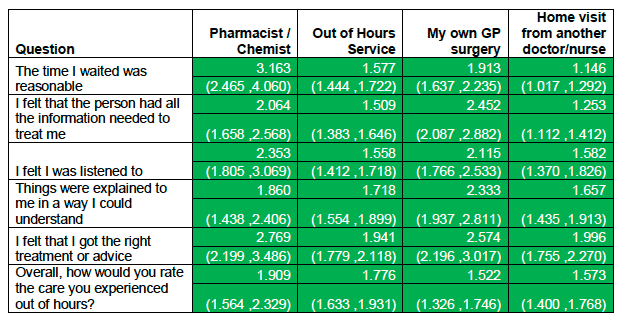
Emergency dental service, ambulance paramedics and A&E/casualty
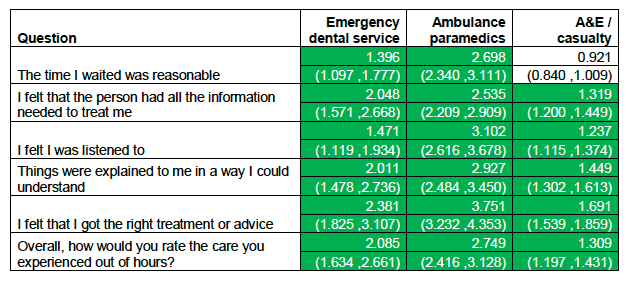
Contact
Email: Gregor Boyd
There is a problem
Thanks for your feedback